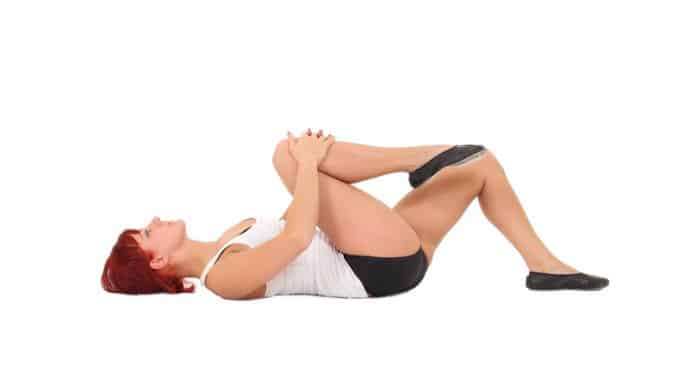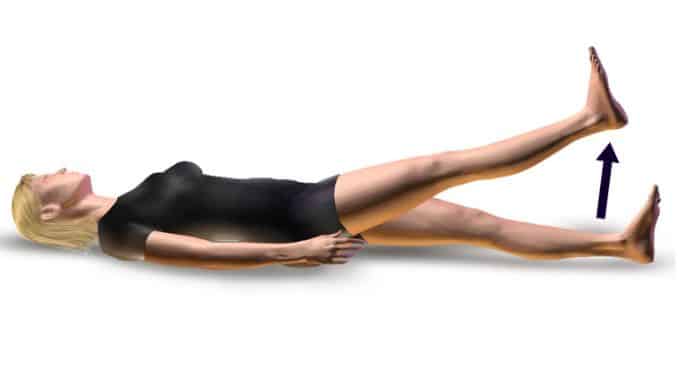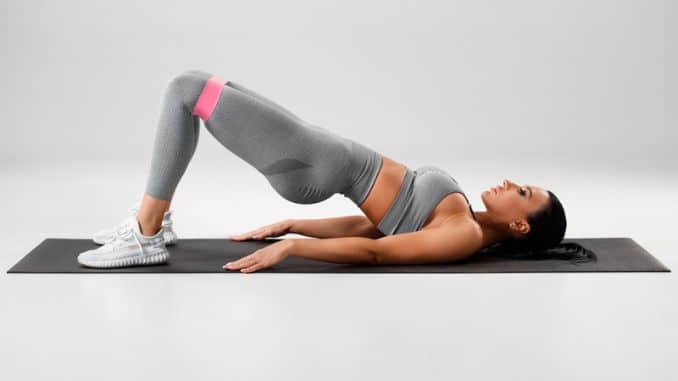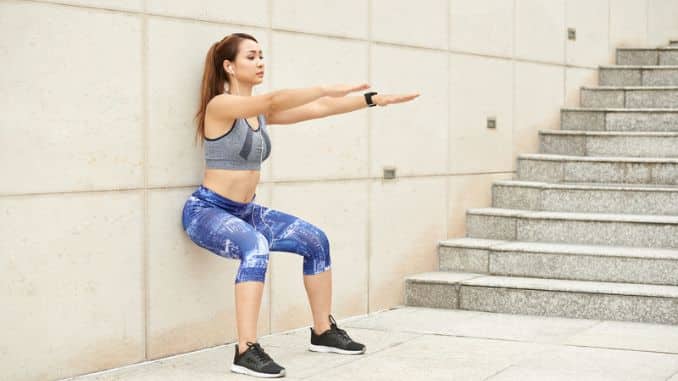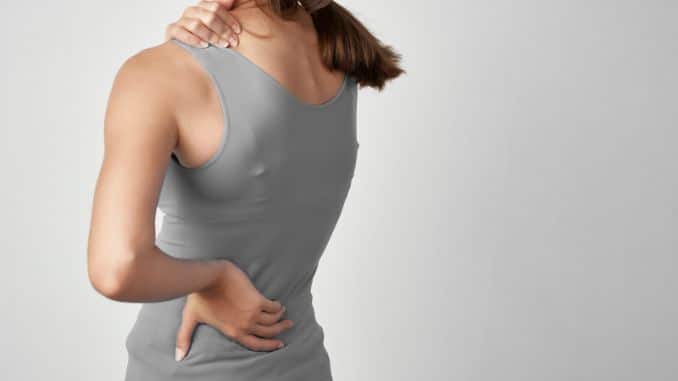
Facet joint syndrome is a significant source of back and neck pain, an arthritis-like spine condition caused by degenerative joint changes between the spine bones. The cartilage inside the facet joint can break down and inflame, triggering pain signals in nearby nerve endings. The doctors may use medication, physical therapy, joint injections, nerve blocks, and nerve ablations to manage symptoms. Chronic symptoms may require surgery to fuse the joint. Learn how to manage the symptoms of facet joint syndrome with these exercises and other treatment options.
Symptoms
Facet Joint Problems symptoms depend on the severity of the condition and possible involvement of a nearby nerve root with one or more of the following symptoms:
- Localized Pain – typically present in the lower back
- Referred Pain – The pain may be referred to the buttocks, hips, thighs, or knees, rarely extending below the knee. Pain may also be referred to the abdomen and/or pelvis. This pain is usually caused by facet arthritis and is experienced as a distinct discomfort, typically characterized by a dull ache.
- Radiating pain. If a spinal nerve is irritated or compressed at the facet joint (such as from a facet bone spur), a sharp, shooting pain (sciatica) may radiate into the buttock, thigh, leg, and/or foot. Muscle weakness and fatigue may also occur in the affected leg.
- Tenderness on palpation. The pain may become more pronounced when the area over the affected facet in the lower back is gently pressed.
- Effect of posture and activity. The pain is usually worse in the morning, after long periods of inactivity, heavy exercise, and/or while rotating or bending the spine backward. Prolonged sitting, such as driving a car, may also worsen the pain. The pain may be relieved while bending forward.
- Stiffness. Suppose the lumbar facet pain is due to arthritic conditions. In that case, stiffness may be present in the joint, typically felt more in the mornings or after long rest, and is usually relieved after resuming physical activity.
- Crepitus. Arthritic changes in the facets may cause a feeling of grinding or grating in the joints upon movement.
Causes
There are many possible causes of the Facet Joint Problem, and these are as follows:
- Age – normally, as we age, our body is also slowly declining; this also happens to the cartilage that wears down with age.
- Injury or repetitive movements
- Obesity
- Poor Posture
Treatment
Exercise, lifestyle changes, and managing back pain can help manage and find relief for Facet Joint Syndrome even though it can’t be reversed. If conservative therapies fail to help you manage and control the pain, your doctor may recommend injections, ablations, or surgery. Here are some of the conservative treatments that might help:
- Self-care – Correct posture and aligning the spine are important to prevent painful episodes. Adjust how you stand, sit, and/or sleep. This will help. And losing weight can reduce the load on the facet joints and alleviate pain.
- Medications – Some patients may require oral anti-inflammatory medications or topical patches, creams, salves, or mechanical bracing. Sometimes muscle relaxers are prescribed for muscle spasms.
- Steroid Joint Injections – A facet joint injection is a minimally invasive procedure that involves an injection of a corticosteroid and an analgesic-numbing agent into the painful joint. Steroids can reduce the swelling and inflammation of the nerves. The pain relief can last days to years, allowing your condition to improve with physical therapy and an exercise program. If you experience a recurrence of pain, the procedure can be repeated.
- Physical Therapy – Exercise is helpful for a painful facet joint and can help you heal faster. Physical therapists can instruct you on proper lifting and walking techniques and work with you to strengthen and stretch your lower back, leg, and stomach muscles. The physical therapist’s exercise instructions should be strictly followed to maximize positive results and achieve your goals.
Exercises For Facet Joint Problems
Exercise helps alleviate pain in many patients without more aggressive treatment, including surgery. Here are some exercises that you may do:
Aerobic Exercises
They are commonly a part of many treatment plans to reduce weight, improve cardiovascular health, and improve endurance. This can be especially beneficial for overweight individuals because excess weight can put extra pressure on the spine and cause the cartilage inside the facet joint to wear away. Aerobic exercises such as walking or biking should be done for 20 to 30 minutes daily.
Stretching
Some stretches for the lower back include the hamstring, knee to chest, hip flexor, and piriformis stretch. Hold these stretches for 20 seconds and do five repetitions.
1. Hamstring Stretch
- Sit on the floor with both legs out straight.
- Extend your arms and reach forward by bending at the waist as far as possible while keeping your knees straight.
- Hold this position for 15 to 30 seconds.
- Relax back into the starting position.
- Repeat three times.
- Be sure to stretch until a gentle pull is felt in the back of your thighs. If you feel any excessive pain, you should stop the exercise
2. Knee To Chest
- Lie on your back with your knees bent and your feet flat on the floor.
- Bring one knee to your chest, keeping the other foot flat on the floor (or the other leg straight, whichever feels better on your lower back). Keep your lower back pressed to the floor. Hold for at least 15 to 30 seconds.
- Relax and lower the knee to the starting position. Repeat with the other leg.
- Repeat 2 to 4 times with each leg.
- Put your other leg flat on the floor while pulling your knee to your chest to get more stretch.
3. Hip Flexor Stretch
- Kneel on your left knee. Place your right foot flat on the floor in front of you, knee bent.
- Lean forward, stretching your left hip toward the floor.
- Squeeze your butt, allowing you to stretch your hip flexor even more.
- Hold for 30 seconds to 2 minutes.
4. Piriformis Stretch
- Lie on the back with both feet flat on the floor and both knees bent. Pull the right knee up to the chest, grasp the knee with the left hand, pull it towards the left shoulder, and hold the stretch. Repeat for each side.
- Lie on the back with both feet flat on the floor and both knees bent. Rest the ankle of the right leg over the knee of the left leg. Pull the left thigh toward the chest and hold the stretch. Repeat for each side.
- Switch sides and repeat.
Strengthening Exercise
1. Straight Leg Raises
- Lie flat on your back, legs straight
- Engage your abdominals to help protect your lower back
- Place your hands by your hips for added support
- Exhale as you lift your leg into the air
- Lift until you form a 90-degree bend at your hips
- Slowly lower, returning to start
2. Glute Bridge
- Lie on your back with bent knees hip distance apart and feet flat on the mat stacked under the knees.
- Engage the core and squeeze your glutes as you lift your hips to a bridge.
- Hold, squeezing tight, and return to the mat with control.
- Repeat for the desired number of reps.
3. Wall Squat
- Stand facing away from a wall, with your back against the wall.
- Plant your feet 12″ in front of your body with a shoulder-width stance, toes pointing forward. This exercise can be used with or without dumbbells.
- Leaning against the wall, lower your body until your knees are flexed at a 90-degree angle.
- Hold this position for two seconds. Your weight should be on your heels, not your toes, and your knees should not cross the plane of your toes. Keep your head neutral, looking straight ahead to check your knee position.
- Extend your legs to elevate your body back to the starting position.
Final Thoughts
Performing these exercises without a doctor’s or physical therapist’s supervision or direction may worsen the condition. Thus, it is always important to seek medical attention before doing facet joint exercises because a physical therapist can design a specific exercise plan and ensure that you perform the exercises properly. He may also perform other modalities such as massage, traction, electrical stimulation, heat, and ice. You may require a facet joint injection if you do not achieve adequate pain relief from conservative therapy.




